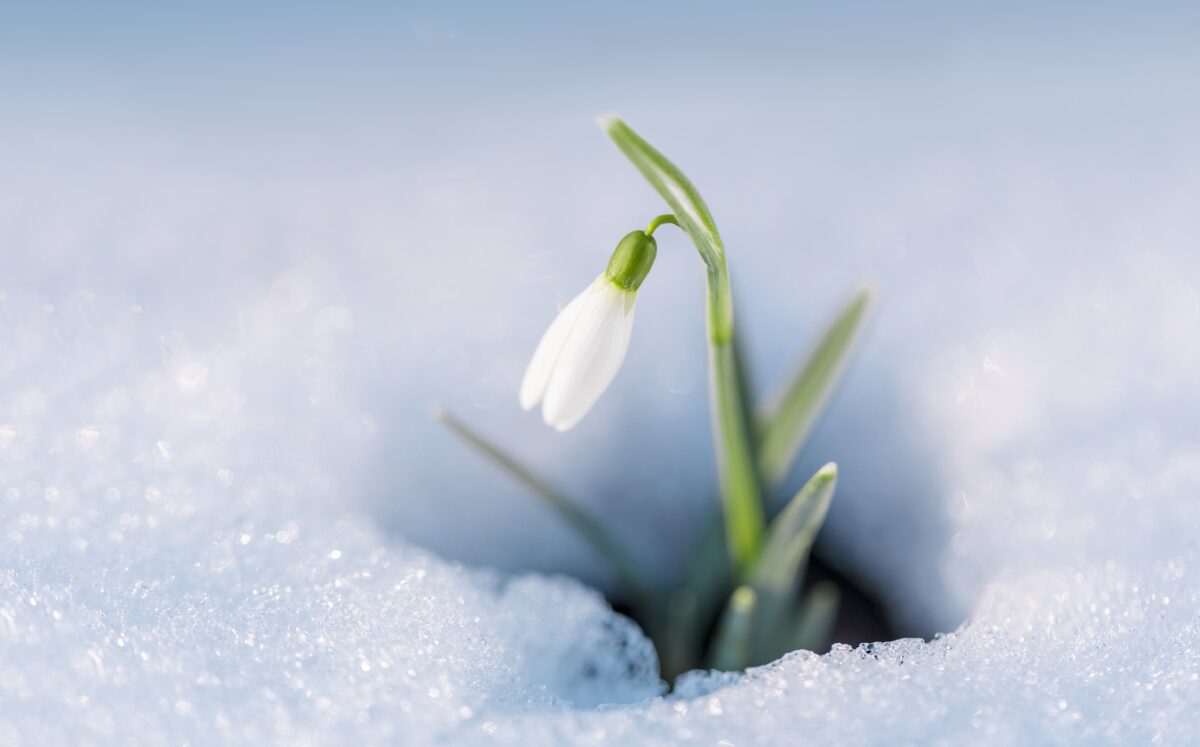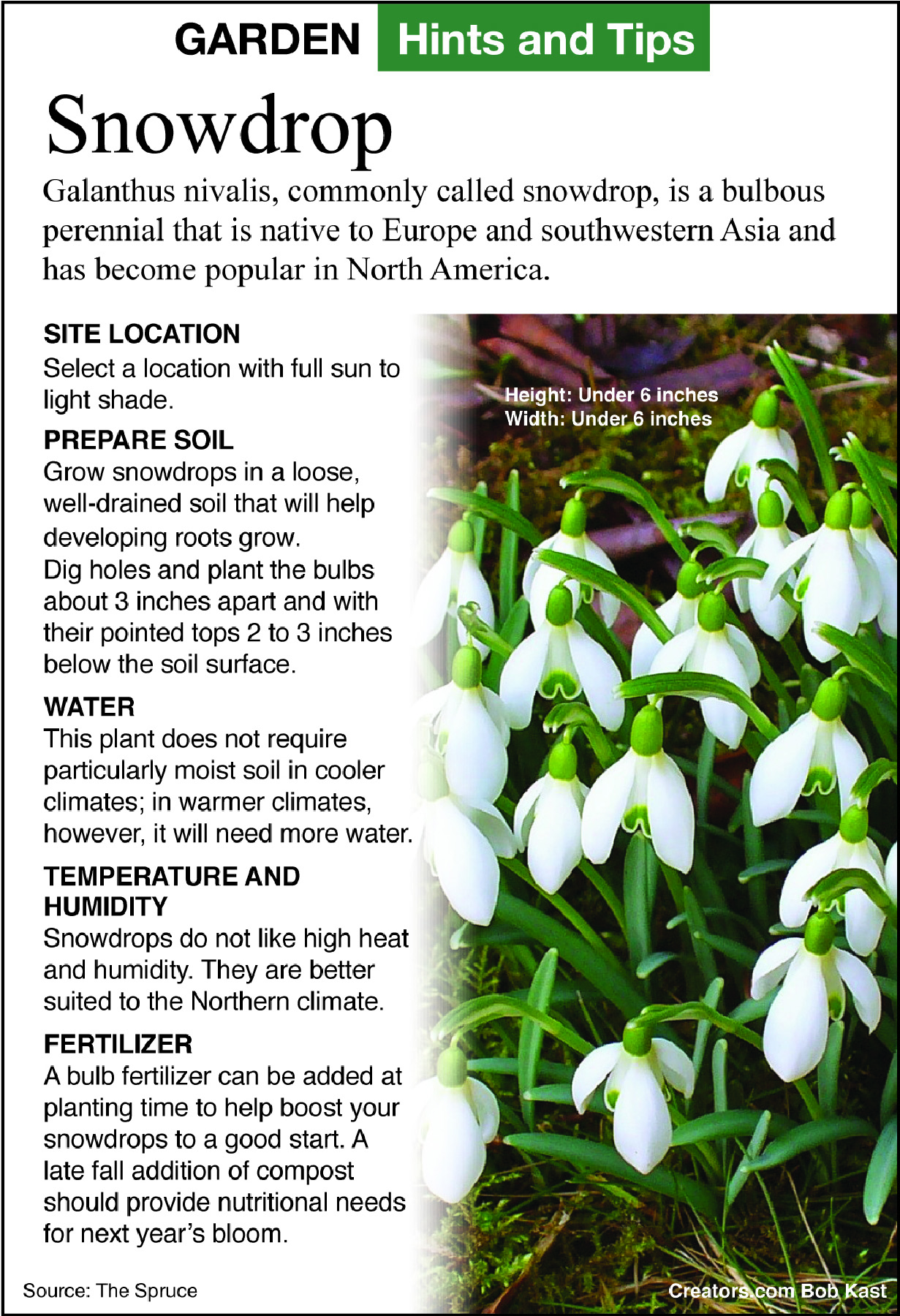


Q: I told my neighbor how nice it was to see her crocuses coming up. She told me they were actually snowdrops. I thought she was just using another name for crocuses, but I looked up the name “snowdrops,” and she was right. Her yard always looks nice, and I don’t want to compete, but I think it would be nice to have an early spring bloomer in my yard. Are they hard to grow and are there other early blooming flowers that you could recommend?
I agree with you. There is not much that is cheerier than seeing flowers very early in the spring. As their name suggests, snowdrops (Galanthus nivalis) are one of the first of all spring flowers to bloom. They bloom in February and March, sometimes pushing up through the snow. They are already blooming in many areas of the South.
There are about 20 species in the Galanthus genus with some species blooming in the summer. The genus name is “gala,” which is Greek for “milk,” and “anthos” is Greek for “flower.” And “nivalis” is Latin for “like snow.” They are in the Amaryllis family. They are native to Europe and Asia and are hardy in USDA Zones 3 through 7.
They tolerate partial shade to full sun and a variety of soil types, and they require almost no maintenance. Plant them in flower beds under trees for a natural look but mainly plant them where you will see them. They will start before the earliest crocuses, but planting crocuses near the snowdrops will extend the season even longer. They are small bulbs that will slowly naturalize and spread. I have had a few even come up in my lawn. An especially nice thing about snowdrops compared to crocuses is they are not eaten by deer, rabbits and other wildlife.
There is another genus in this family called Leucojum that has a few species commonly called summer snowflakes. They have more flowers per stem and all six of the petals are the same length, but on snowdrops the three outer petals are longer than the three inner petals.
Another flower that blooms along with and maybe even before the snowdrops is the winter aconite or winter buttercup (Eranthis). There are several species and a few cultivars of this short yellow flower. They grow in similar conditions to snowdrops, and they are also not usually eaten by mammals.
The Lenten rose or Hellebore (Helleborus) is a group of about 20 species of perennials that bloom in early spring. There are many hybrids and cultivars that are increasing the color ranges of the flowers. Newer varieties hold their flowers higher above the leaves to create a prettier plant. Unlike the spring-blooming bulbs, the Lenten rose will keep its leaves all summer and maybe through most of the following winter. Cut them off in late winter to let the new leaves and flowers come up.
The early blooming netted iris (Iris reticulata) starts blooming at about the time that the Eranthis and Galanthus species are finishing. It has blue to purple flowers that are a nice contrast to the bright yellow Eranthus flowers. This is a small iris species with the flowers only getting about six inches tall.
All these spring bloomers are best planted in the fall, with the exception that you may find Lenten roses for sale in pots during spring and summer. I like that you are looking at the flowers blooming now and thinking ahead to planting them in your landscape. The best time to plan any gardening task is during the season it is growing. That is why companies that sell spring bulbs send you the catalog in the spring. Check out catalogs from Brent and Becky’s Bulbs and Colorblends for even more spring-blooming bulbs.

